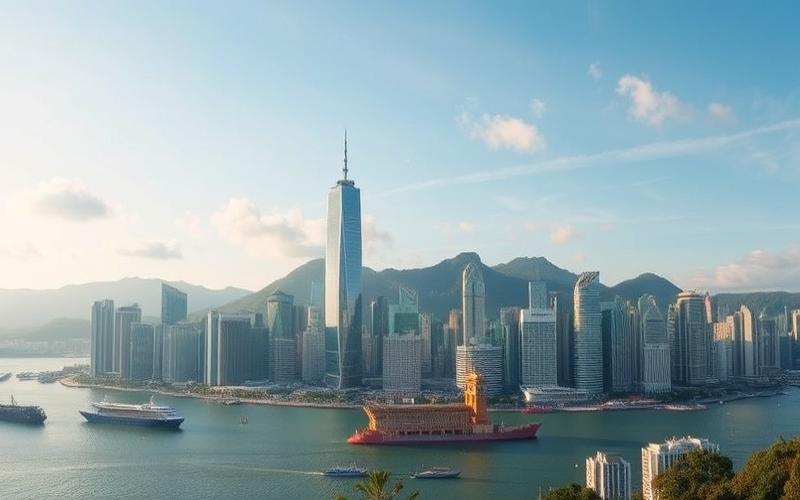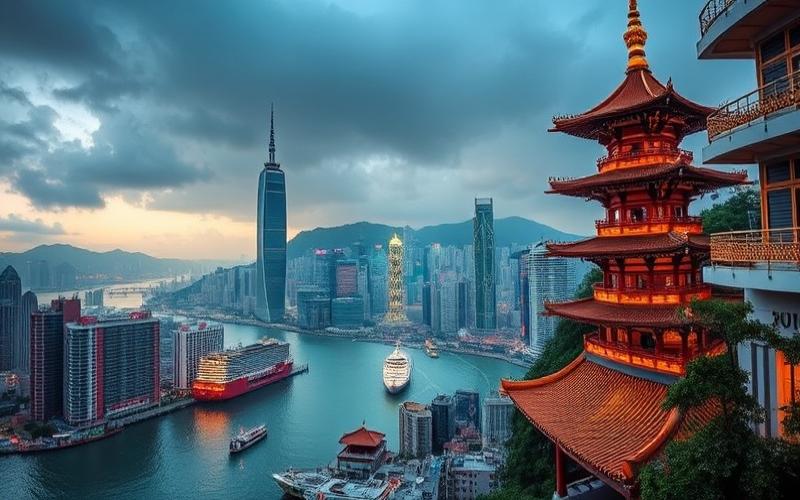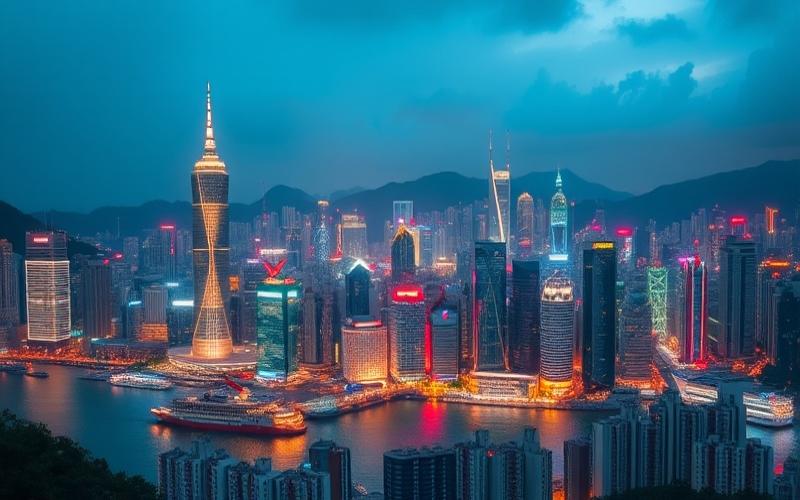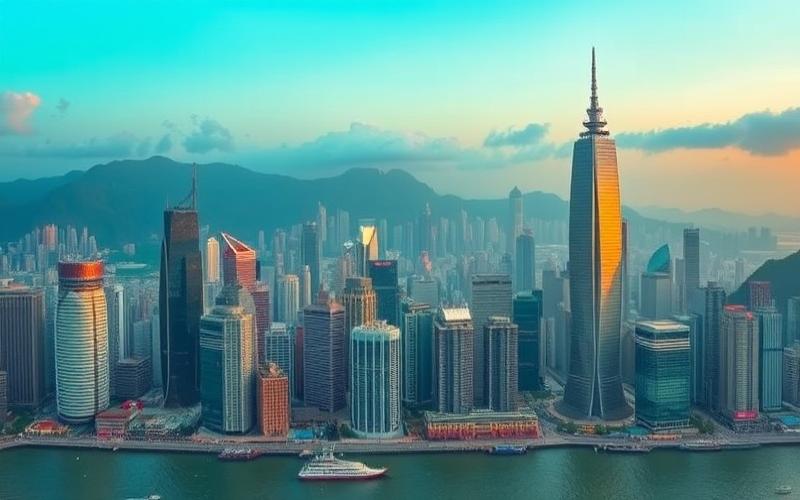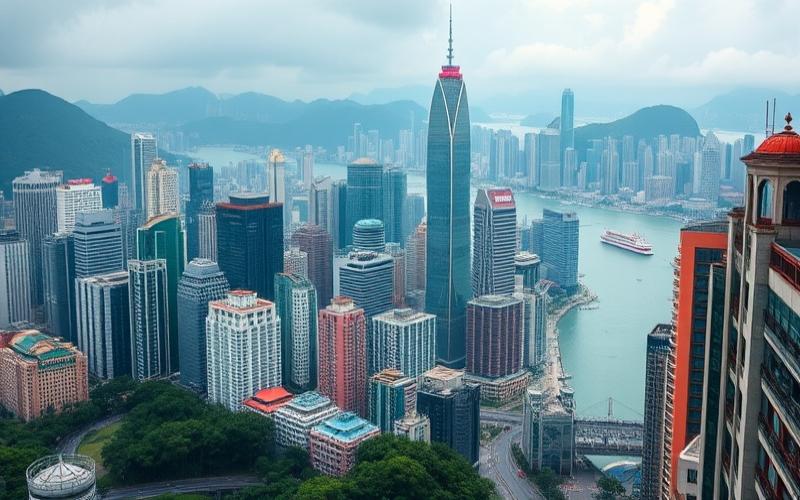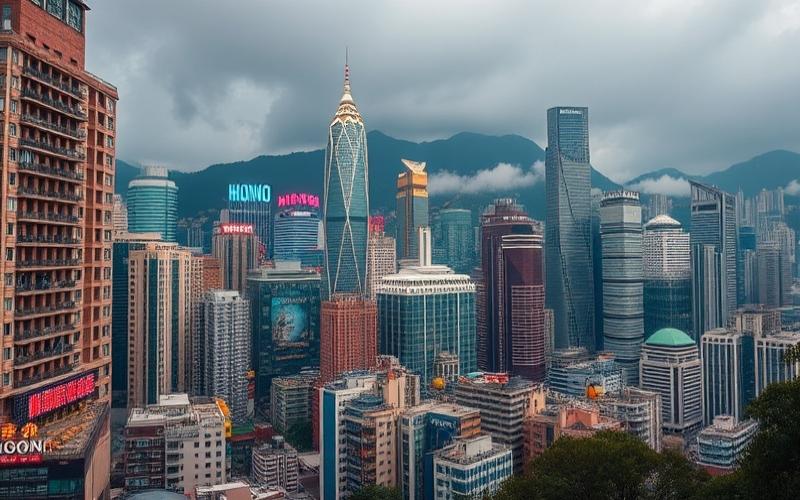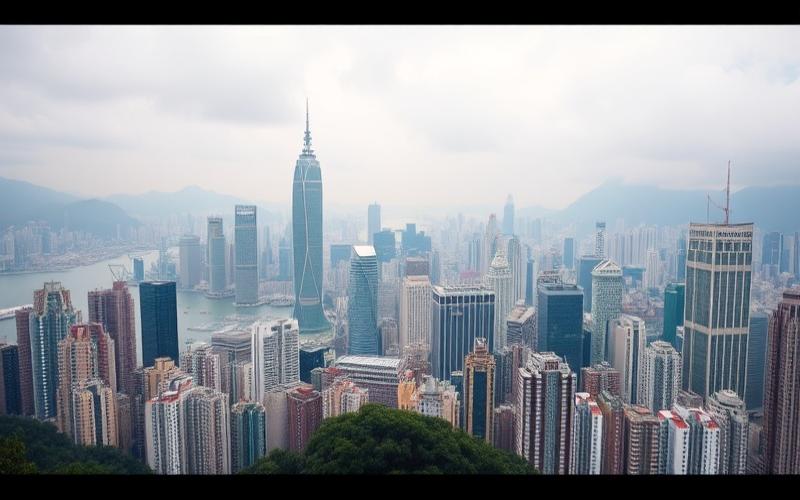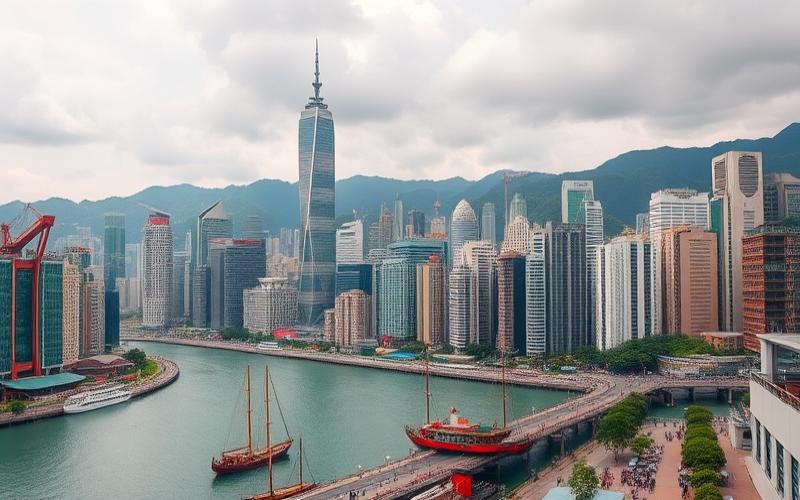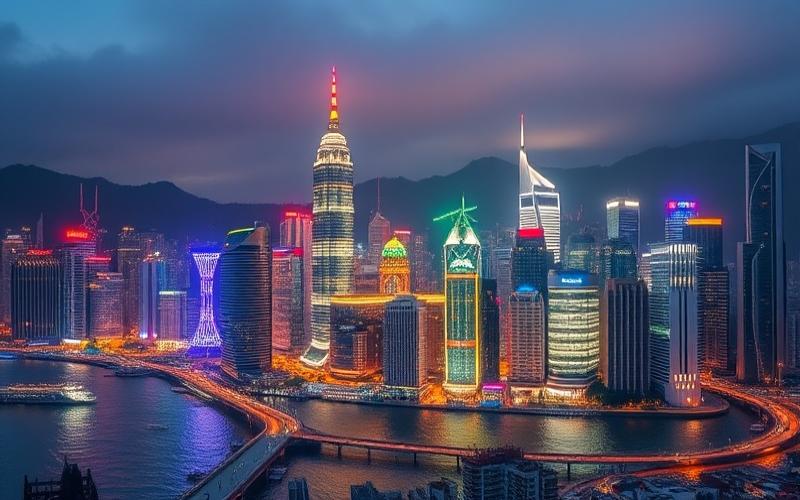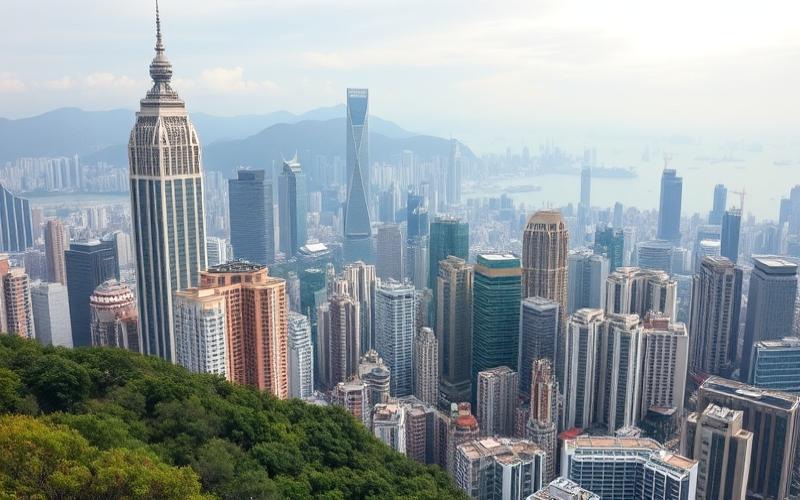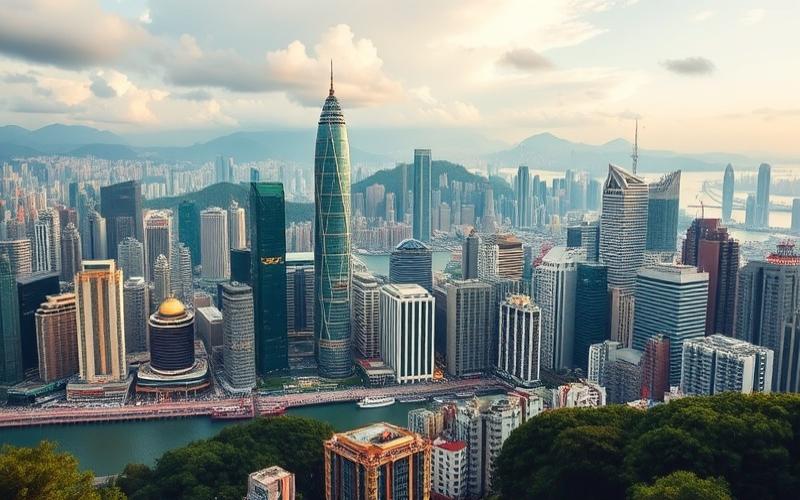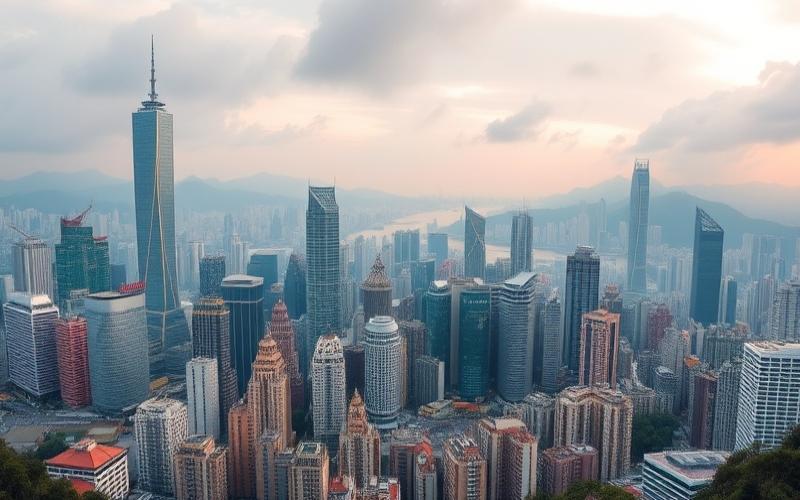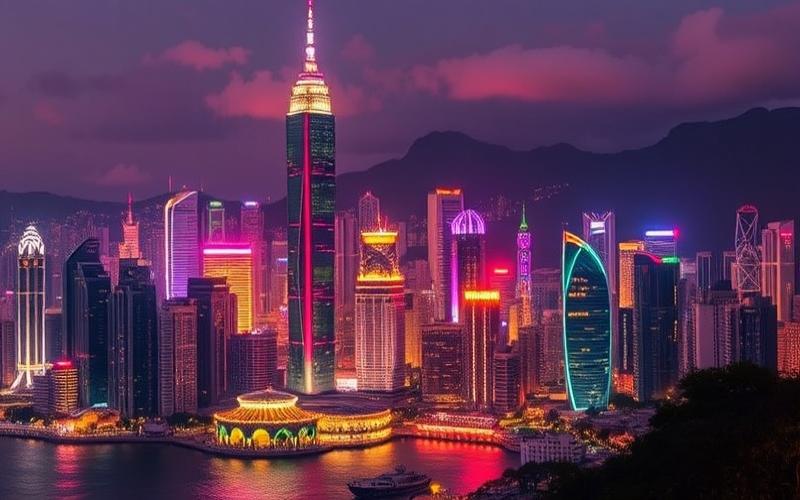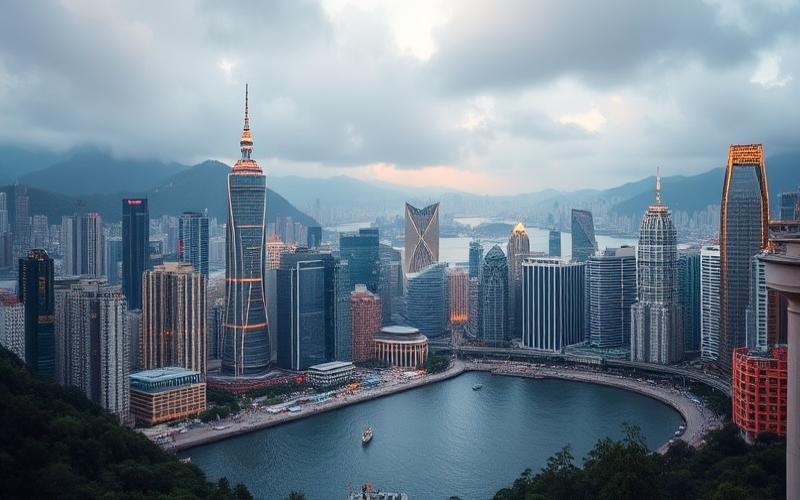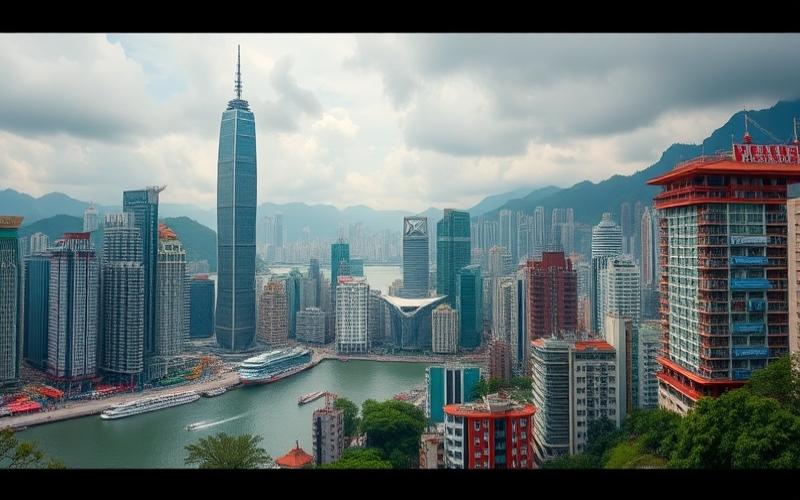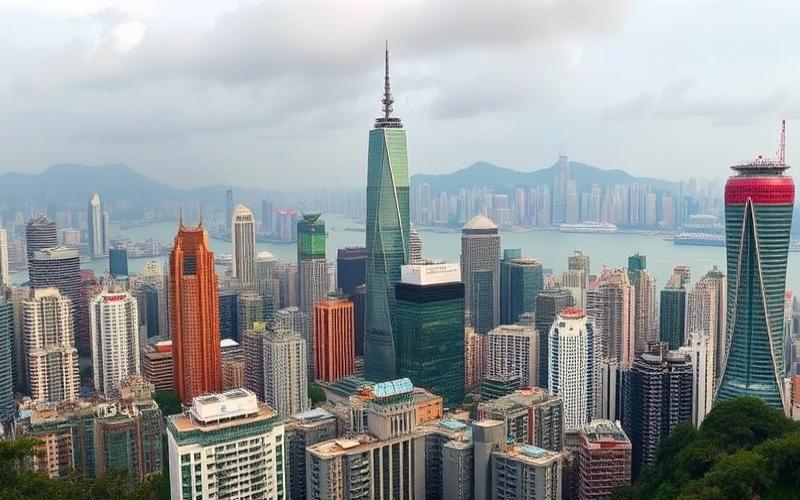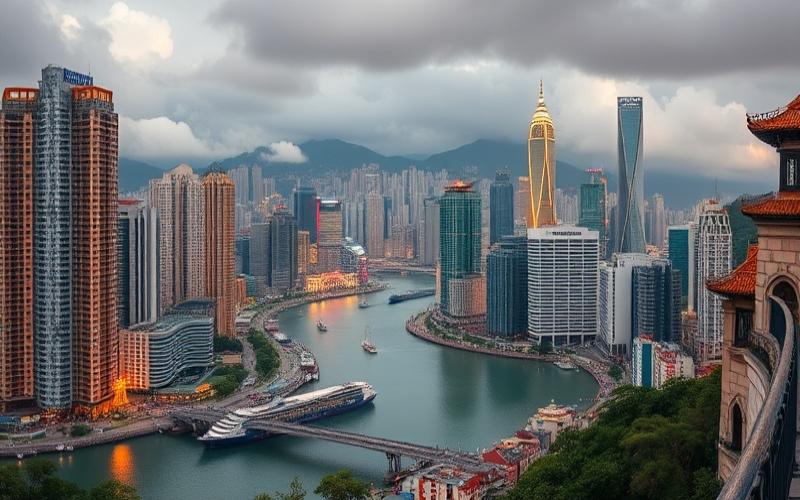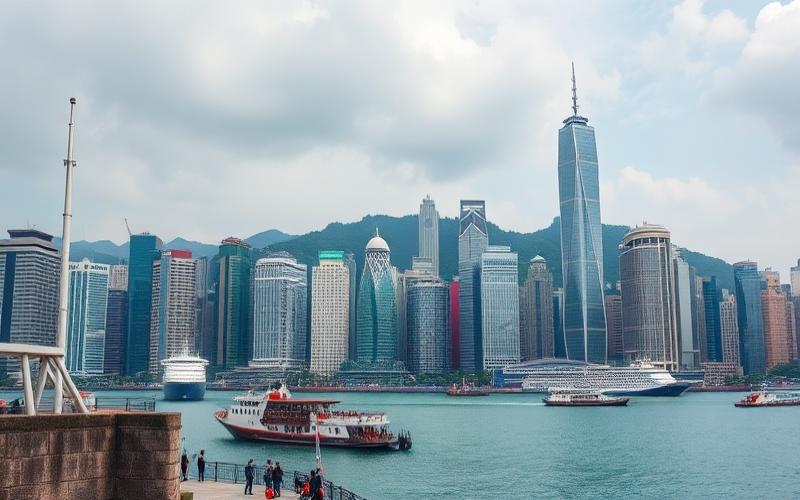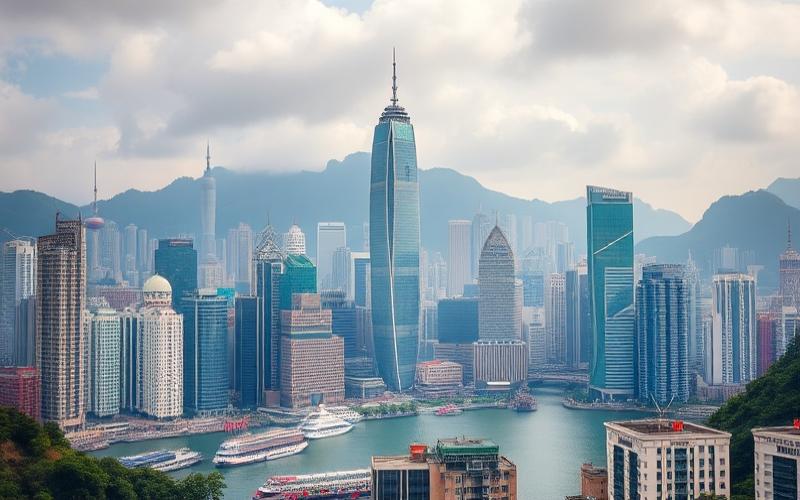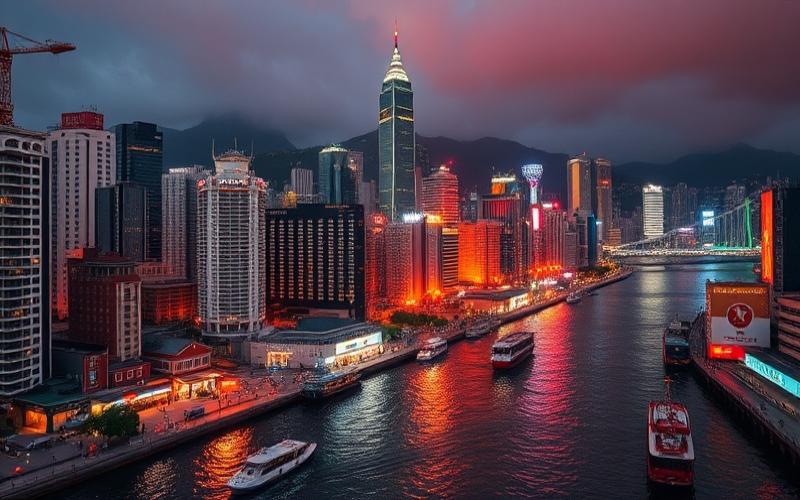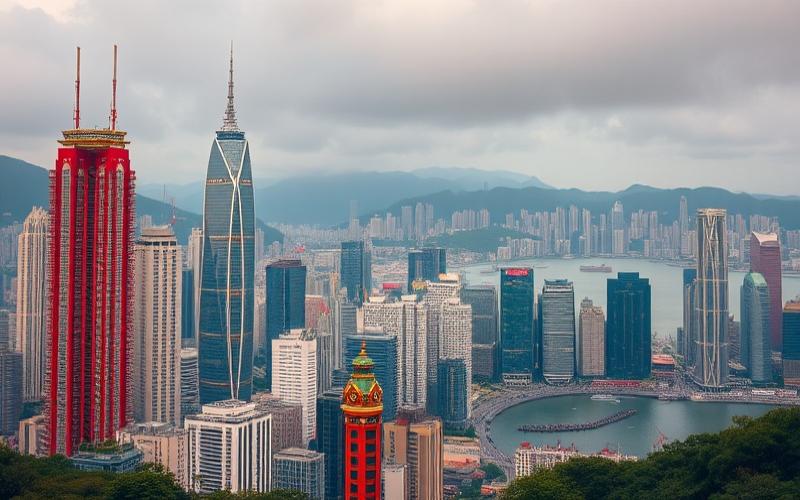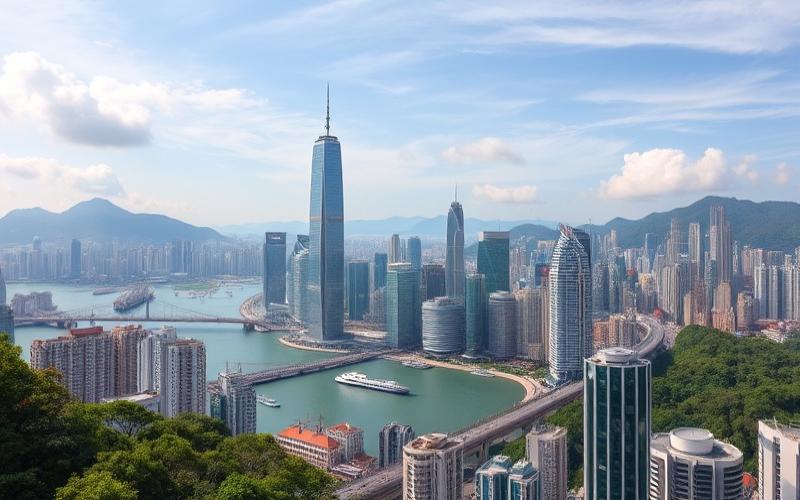
 Published on and written by Cyril Jarnias
Published on and written by Cyril Jarnias
In a global context where sustainability is at the forefront of concerns, Hong Kong is positioning itself as a pioneering model of green innovation in real estate. By 2025, the city is launching an ambitious set of environmental standards coupled with attractive subsidies to encourage developers and property owners to adopt eco-friendly practices.
These initiatives aim to reduce the urban carbon footprint while stimulating the local economy, offering a turnkey solution for those looking to combine environmental responsibility and profitability. By exploring these forward-thinking measures, this article reveals how Hong Kong is paving the way toward a greener, more sustainable future in real estate.
Environmental Standards for Green Real Estate in Hong Kong
The environmental standards in effect in Hong Kong for green real estate primarily rely on BEAM Plus certification, a major local benchmark, supplemented by other international standards such as LEED and BREEAM. The anticipated evolution through 2025 aims for a gradual strengthening of requirements and increased integration of innovative criteria for urban sustainability and energy efficiency.
Major Environmental Certifications in Hong Kong
| Certification | Origin | Scope | Main Criteria |
| BEAM Plus | Local (HK) | All building types (new or existing) | Energy, carbon, climate adaptation, transportation, site ecology, materials & waste, water, occupant health & well-being, pollution management |
| LEED | USA | International | Energy & atmosphere, materials & resources |
| BREEAM | UK | International | Sustainable site management and construction |
- BEAM Plus, administered by the Hong Kong Green Building Council (HKGBC), is the main assessment system. It assigns a level (Platinum / Gold / Silver / Bronze) based on credits earned across different areas: energy/carbon performance; climate resilience; sustainable mobility; urban biodiversity; responsible resource use.
- International certifications like LEED or BREEAM are also recognized for certain projects aiming for global alignment.
Key BEAM Plus Criteria:
- Reduction of energy consumption
- Decrease in carbon emissions
- Integration of smart/innovative solutions
- Efficient management of water and waste
- Improvement of indoor well-being
Expected Evolution Through 2025
Anticipated trends include:
- Gradual strengthening of required energy thresholds.
- Increased consideration of climate change in criteria.
- Explicit promotion of smart technologies (“smart building”).
- Growing alignment with international standards.
Challenges Related to Aligning with These Standards
List of main challenges:
- High initial costs related to technical studies and early integration of green solutions.
- Administrative complexity: need for detailed documentation throughout the project.
- Potential rigidity during adjustments in construction or operational phases.
Summary List:
- Additional financial investment required from the design stage.
- Increased need for certified specialized expertise (BEAM Pro…).
- Limited adaptability to rapid regulatory changes.
Opportunities Offered by These Standards
Summary List:
- Increased property valuation through locally/internationally recognized environmental labels.
- Easier access to certain “green” financing.
- Significant long-term reduction in operational costs through better energy efficiency.
- Tangible contribution to urban sustainability goals.
Government Efforts and Private Collaborations
| Stakeholder | Main Actions |
| HK Government | Tax incentives for green buildings; promotion among public developers |
| HKGBC + partners | Continuous development of the BEAM Plus framework |
| Private partnerships | Pilot projects demonstrating construction innovations |
The government actively encourages compliance through targeted financial/tax incentives. The private sector collaborates with HKGBC to test and then widely deploy technological or procedural innovations meeting the new criteria.
Potential Impact on Urban Sustainable Development
The widespread application of BEAM Plus gradually leads toward urban planning that is more resilient to climate change, a marked reduction in the real estate carbon footprint, and stimulates better architectural quality focused on overall well-being—all major assets for positively evolving Hong Kong’s built environment by 2025.
In summary: these standards strongly structure the qualitative evolution of Hong Kong’s real estate portfolio—they generate constraints but also decisive competitive advantages in an international context where energy efficiency and ecological responsibility are becoming essential.
Good to Know:
In Hong Kong, environmental standards for green real estate primarily revolve around BEAM Plus certification, which assesses energy efficiency, indoor environmental quality, and materials management, among other criteria. As these guidelines evolve toward 2025, the focus is on broader adoption of sustainable practices, including the use of eco-friendly materials and integration of renewable energy technologies. The Hong Kong government, in partnership with private stakeholders, is intensifying its incentives to encourage alignment of new real estate projects with these standards, representing both a challenge and an opportunity to strengthen urban sustainable development. Meanwhile, alignment with international standards such as LEED is also encouraged to benefit from global recognition. The potential impact of these standards on the city translates into reduced carbon emissions and increased urban quality of life, although initial costs and the need for specialists may hinder some projects.
Government Incentives for Eco-Construction
Main Standards and Policies for Eco-Construction in Hong Kong in 2025
The Hong Kong government has implemented several structuring measures to encourage eco-construction and carbon footprint reduction in the building sector:
- Direct financial subsidies:
- Grants for installing green infrastructure, such as fast-charging stations (target of 3,000 stations by 2030) and hydrogen stations.
- Specific “EV-charging at Home Subsidy Scheme” program supporting the creation of parking spaces equipped for electric vehicles (200,000 planned by mid-2027).
- Tax reductions and regulatory incentives:
- Concessions on gross floor area granted to projects integrating eco-responsible devices or equipment related to clean mobility.
- Targeted tax benefits for investments in low-carbon technologies.
- Additional incentives:
- Dedicated funds for green technology development, particularly through support for hydrogen research and its local certification.
- Direct support for pilot projects using sustainable or innovative materials, as well as recycling in the construction sector.
Targeted Environmental Goals
The adopted measures primarily seek to:
- Significantly reduce CO₂ emissions from the new real estate sector by promoting:
- Increased use of renewable energy
- Bioclimatic design
- Systematic integration of low-consumption solutions
- Promote sustainable architecture through:
- Strengthened standards on energy performance
- Increased requirements for thermal efficiency
| Incentive | Description | Expected Impact |
|---|---|---|
| EV Subsidies | Funding for charging station installation | Acceleration of green mobility |
| Tax Exemptions | Reduction in taxes/green investments | Increased adoption of innovation |
| Buildable Area Bonus | Increased GFA if green criteria met | Larger sustainable projects |
| R&D Funds | Support for materials/construction innovation | Diffusion of low-carbon techniques |
Recent Examples of Projects Benefiting from Incentives
- Accelerated deployment of residential real estate largely equipped with subsidized electric charging points.
- Recent construction of the new “Airport City” district, designed with high energy efficiency standards and directly benefiting from regulatory bonuses.
Observed/Expected Impacts on the Green Real Estate Market
- Sustained growth in the “green buildings” segment, stimulated by a strengthened incentive framework.
- Notable increase in private investments in eco-responsible infrastructure, favored by reduced financial risk for technical innovations thanks to public subsidies.
- Gradual mitigation of the often high initial cost associated with eco-friendly choices, making these options more accessible.
Difficulties Encountered or Anticipated During Implementation
- Public budget constraints, exacerbated by a persistent fiscal deficit that sometimes limits the scope or rapid renewal of allocated financial aid.
- Persistent shortage of qualified labor, hindering some ambitious construction projects despite massive efforts in specialized vocational training over several years.
- Rising costs of eco-friendly materials, exacerbated by increased global volatility and certain regional logistical barriers.
- Administrative complexity related to simultaneously obtaining multiple aids; risk that only certain major players can fully benefit from the current system.
Key Takeaway: Hong Kong’s ambitions now place eco-construction at both the economic and environmental center—but their realization will closely depend on the collective ability to overcome these structural obstacles.
Good to Know:
In 2025, the Hong Kong government is implementing ambitious standards to promote eco-construction, with incentives such as financial subsidies and tax reductions aimed at reducing the carbon footprint of new constructions. Buildings like the Kai Tak Development project have already benefited from these measures, demonstrating the possibility of sustainable architecture in a dense urban environment. These incentives aim to transform the green real estate market, making sustainable practices more accessible while addressing climate challenges. However, Hong Kong’s construction sector may face significant challenges, such as the high cost of eco-friendly materials and the need to train specialized personnel to apply these innovative technologies, which could hinder widespread adoption of green practices.
Understanding BREEAM Certification in Hong Kong
BREEAM certification (Building Research Establishment Environmental Assessment Method) is an international standard created in 1990 in the United Kingdom that assesses the environmental performance of buildings, regardless of their type or use. Its main objective is to promote sustainable design, construction, and management practices to reduce the ecological impact of buildings throughout their life cycle.
BREEAM’s Main Objective:
- Encourage energy efficiency and responsible resource management.
- Improve user comfort and innovation in construction.
- Reduce the overall environmental footprint of buildings.
Adoption and Adaptation of BREEAM in Hong Kong:
- Hong Kong introduced BREEAM to meet the growing demand for sustainable buildings in a dense, subtropical urban context.
- Local adaptations have been integrated, such as consideration of specific climatic conditions (humidity, heat), rainwater management, and priority given to indoor air quality.
- Specific versions, like BREEAM International or local technical guides, have been used to incorporate Hong Kong regulatory requirements and construction standards.
Examples of BREEAM-Certified Buildings in Hong Kong and Met Criteria:
| Building | BREEAM Level Achieved | Main Criteria Met |
|---|---|---|
| One Taikoo Place | Excellent | Energy efficiency, water management, sustainable materials, indoor air quality |
| The Quayside (Kwun Tong) | Very Good | Waste management, sustainable mobility, accessibility |
| International Commerce Centre | Excellent | Energy management, innovation, occupant comfort |
Generally Met Criteria:
- High energy efficiency (insulation, LED lighting, high-performance HVAC systems)
- Rational water use (recovery, consumption reduction)
- Low environmental impact materials
- Easy access to public transport and soft mobility
- Optimization of user well-being and comfort
Impact of BREEAM Certification on Hong Kong’s Real Estate Market:
Economic Benefits:
- Increased valuation of certified real estate properties on the market.
- Reduced operational costs through better energy efficiency and optimized resource management.
- Enhanced attractiveness for international investors and tenants sensitive to CSR issues.
Environmental Benefits:
- Reduction in CO₂ emissions and local pollution.
- Improvement in urban biodiversity through integration of green spaces and nature-based solutions.
- Promotion of urban planning more resilient to climate change.
Trends Expected for 2025 Regarding BREEAM Certification in Hong Kong:
- Increase in the number of certified projects due to stricter local regulations and increased demand for green real estate.
- Strengthened integration of BREEAM in public policies: tax incentives, subsidies, and buildability bonuses for certified buildings.
- Focus on biodiversity, climate resilience, and user well-being as priority assessment areas.
- Development of digital tools for real-time monitoring of environmental performance (BREEAM In-Use).
In Summary:
BREEAM certification, adapted to Hong Kong’s local context, has become a strategic lever for the sustainable transformation of the real estate sector, bringing both significant economic and environmental benefits and fully aligning with the regulatory and innovation dynamics expected by 2025.
Good to Know:
BREEAM certification, which assesses building sustainability, aims to reduce environmental impact while improving occupant comfort. In Hong Kong, BREEAM has been adapted to account for local climatic and urban specificities, particularly by integrating specific criteria such as efficient space use and water resource management. Notable examples include IFC Tower 2, which obtained this certification thanks to its innovations in energy efficiency and indoor air quality. This adoption has stimulated the real estate market, with BREEAM-certified buildings often attracting investors for their energy-saving potential and valuation. By 2025, BREEAM is expected to play a crucial role in sustainable development strategies, influencing government policies and subsidy programs for green real estate, thereby consolidating Hong Kong’s position as a leader in sustainable urban development in Asia.
Disclaimer: The information provided on this website is for informational purposes only and does not constitute financial, legal, or professional advice. We encourage you to consult qualified experts before making any investment, real estate, or expatriation decisions. Although we strive to maintain up-to-date and accurate information, we do not guarantee the completeness, accuracy, or timeliness of the proposed content. As investment and expatriation involve risks, we disclaim any liability for potential losses or damages arising from the use of this site. Your use of this site confirms your acceptance of these terms and your understanding of the associated risks.

